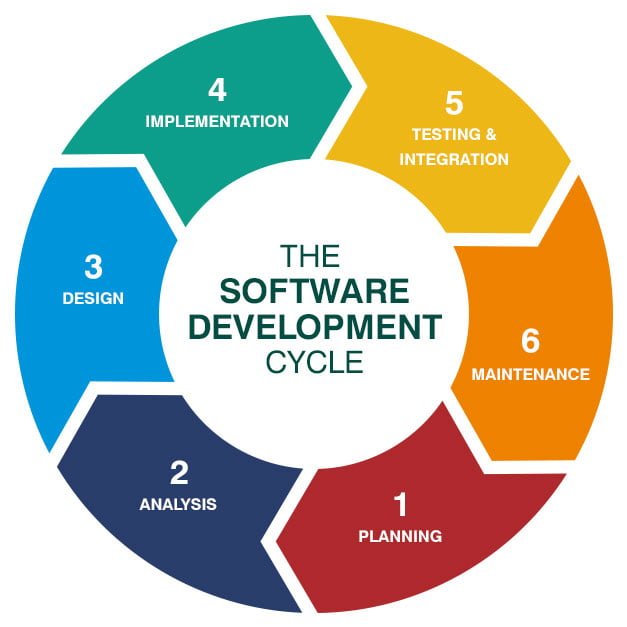It is now considered the age of technology and everywhere you look, there will be some form of technology in place. The reason for this advancement in technology is to make life more convenient. So technology in a nutshell is meant to increase productivity. Some may see it as a means to buy more time. When people start depending a lot on technology, the demand for it will increase and in different aspects of life. The opportunity for software development is a growing demand and it keeps increasing. Almost any machine that we currently use are mostly supported by some form of software behind it.
This means that in the next couple of years, we will see more and more softwares and applications being made and implemented into our daily lives. We will then begin to depend on it. This is even more evident in a fast paced city like Singapore where technology is needed.

The Cycle
This is a cycle which most software development agencies in Singapore use to develop their software. This is a guide for people to understand the flow of a typical software development process. This also informs what task is to be performed at which stage of the development process and is a simple method for quality control which will assist and ensure that the software development team is on the same page.
1. Planning
As development goes, there is always a goal that is set out. This stage is planning for how and what must be done to achieve that goal. This part is considered an important part of any development process and is the first in it. Mainly, the goal will be discussed between the developer and the client. This is to see whether the goal can be achieve and whether it makes sense. There are also considerations when planning to see what the competitors are doing and how this software can stand apart from them. The next important aspect of planning is putting together a cost analysis. The purpose for this is to make sure that this project will be able to further the client’s business objectives.
2. Analysis
At this stage, the software development team will need to define the goals and analyse it to function. Then they will need to determine what operations the software should have in order to run optimally. This stage will require gathering and interpreting the information and then diagnosing any issues available so that improvements can be implemented. Once that has been done, the software development team will need to determine what obstacles there are and inform of ways that will solve this. When client has been informed of all this information and approved, the development can begin.
3. Design
Design maybe subjective to different clients and it is design to be optimal for the software’s architecture. The clients will need to go through this process together with the development team. The design approach will be based on the clients feedback once they have agreed to go with it. Design modularity, risk assessment, market research and time line must all be considered when planning for the design. Once this process is completed, the software development team must be able to develop and deliver the software based on the planning of information with little to no adjustments.
4. Implementation
Once design of the software is completed, next is the actual development. During this stage the software development team will need to create the software using the programming code that is suitable to match the design. The team will use high-level programming languages and various programming tools like debuggers, interpreters and compilers to generate this code. Once this has been completed, the finished software will then be put into production.
5. Testing
For every software development project, this is a crucial step in the process. This step will determine whether the software actually functions as it was intended for. At this step, the completed software is checked to find any bugs and defects that must be fixed and tested again until it runs as intended. Although some clients may not view this as an important step in the process. As the development company this is an important part.
6. Maintenance
Once the testing is positive and everything is developed to the guidelines, it will be ready for deployment. Once everything is completed, it will be released into the marketplace. At this step, it is mostly for making sure that the software once released will be effective and productive. Over time the software will experience a few issues which may need attention. The software development team will then need to make adjustments and improvements as needed. The goal for this step is to make sure that the software remains operating at a high efficiency and is relevant in the current marketplace.
Developing a software may be considered a tedious process, however if done correctly it will make a great impact in any community or marketplace. In order to create something that is worthwhile, a process should be implemented and this is a general process and guide for any software developers.
